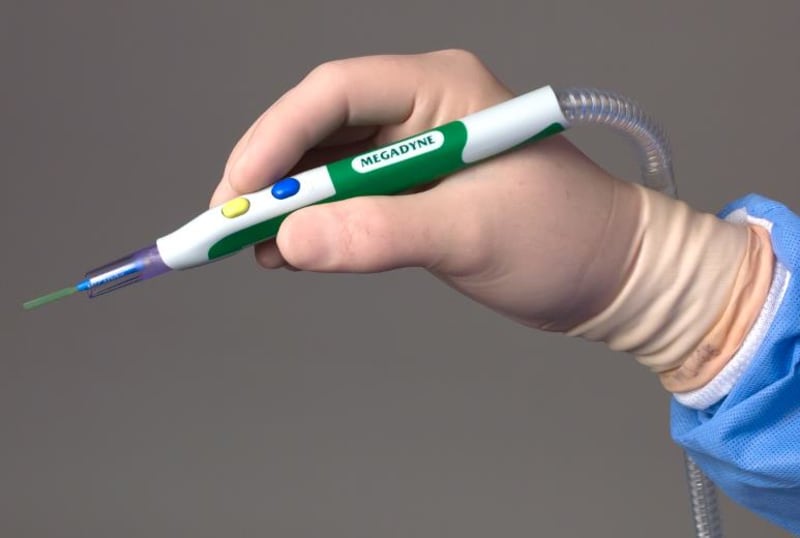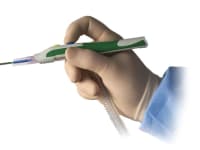ZIP Pen™ DESCRIPTION –
Electrosurgery uses Radio Frequency (RF) energy to cut and cauterize tissue in over 80% of all surgical procedures (41/51.4 million total US surgeries (2014)(1*) and 187/234.2 million worldwide (2008)(2*)). Electrosurgery generates smoke and aerosols that billow from the surgical wound, which have been tolerated as a nuisance. This smoke has been proven to contain, “carbon monoxide, polyaromatic hydrocarbons, and a variety of trace toxic gases. As such, (it) can produce upper respiratory irritation, and have in-vitro mutagenic potential. Although there has been no documented transmission of infectious disease through surgical smoke, the potential for generating infectious viral fragments, particularly following treatment of venereal warts, may exist.”(3*).
ZIP Pen eliminates the difficulty in using smoke evacuation pens by greatly reducing or eliminating torque forces created by the tubing/cord found in conventional smoke evacuation pen designs.
Potential benefits of ZIP Pen are:
- Improved dexterity, agility, and range of motion.
- Minimal impact to Surgeon technique through functional design.
- Increased potential for universal adoption of smoke capture in the O.R.
- Better air quality and improved health for Surgeons, staff and patients.
The tubing/cord is attached to the proximal end of traditional smoke-evacuation pens (end closest to the user). This tubing/cord generates torque forces that resist pen movement making it sluggish and fatiguing which amplifies perceptions of increased pen weight and reduced dexterity. This can affect the Surgeons’ accuracy, and often discourages them from using such a device resulting in surgical smoke exposure to staff and patients.
ZIP Pen moves the attachment of the tubing/cord to a location forward of the Surgeons’ hand, with the tubing/cord captured in a partially open channel which forms the pen body. Tubing/cord exit from this channel can be adjusted (zipped) to the most ergonomic position, and can be re-adjusted (zipped in or out) as user needs change. In the “Trigger” grip, the tubing/cord runs through the palm of the hand, providing a stable, handle-like feature not available in other pen designs. In this grip, forces are removed from the proximal end.
Swivels have also been used to eliminate tubing/cord resistance to movement, and a grip-enhancing surface has been added to improve control.
ZIP Pen’s simple design takes advantage of low cost materials and processes which help control manufacturing costs and keep the sales price low for a smoke evacuation pen. Potential to automate some assembly steps will offer improvements to future production costs.
The design of ZIP Pen has been awarded several U.S. patents, and others are pending – U.S. 8,211,103, 8,882,767, 8,882,768, D709,196.
ZIP Pen is a truly unique and effective design that reduces ergonomic issues limiting the adoption of smoke capture technology. ZIP Pens’ minimal impact to Surgeon technique, through functional design, promises to increase the adoption of smoke capture in the O.R., with the benefit of increased air quality and health for Surgeons, staff, and patients.
(1*) http://www.cdc.gov/nchs/fastats/inpatient-surgery.htm
(2*) http://www.who.int/surgery/global_volume_surgery.pdf
(3*) https://www.osha.gov/SLTC/laserelectrosurgeryplume/
Video
Like this entry?
-
About the Entrant
- Name:Darcy Greep
- Type of entry:teamTeam members:Paul Borgmeier, Cameron Creek, Rob Farnsworth, Chad Frampton, Mark Glassett, Darcy Greep, Mike Hintze, Ryan Lewis, Jill Skoczen.
- Software used for this entry:SolidWorks
- Patent status:patented





